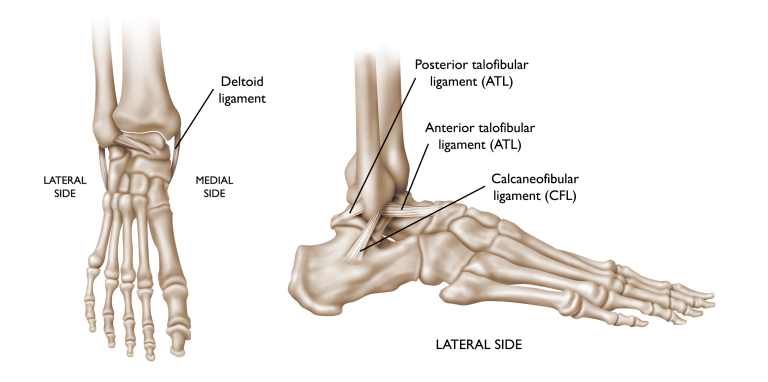Musculoskeletal Disorders
Back & Neck
Foot & Ancle
Hand & Wrist
Hip & Pelvis
Knee & Lower Leg
Athletic injuries
Ankle Sprains
Ankle sprains are common injuries that occur among people of all ages and at all activity levels; An ankle sprain occurs when the strong ligaments that support the ankle stretch beyond their limits and tear.
Ankle sprains are common injuries that occur among people of all ages and at all activity levels;
An ankle sprain occurs when the strong ligaments that support the ankle stretch beyond their limits and tear. The severity of a sprain can vary greatly depending on the number of ligaments involved and the extent to which the ligaments are torn.
Most sprains heal with conservative treatments like ice, elevation, over-the-counter medications, and simple rehabilitation exercises. However, if your ankle remains swollen or painful for several weeks despite conservative treatments, or if you have difficulty putting weight on your ankle, you may need to be evaluated to ensure that you do not have a severe ankle sprain or fracture.
If symptoms do not improve despite non-operative treatment, you may need surgery to repair or reconstruct the injured ligaments.
Without proper treatment and rehabilitation, a chronic or untreated severe sprain can weaken your ankle, making it more likely that you will injure it again. Repeated ankle sprains can lead to long-term problems, including chronic ankle pain, arthritis, and instability
Classification of Ankle Sprains
After the examination, your doctor will determine the grade of your sprain to help develop a treatment plan. Sprains are graded based on how much damage has occurred to the ligaments.
Grade 1
- Slight stretching and microscopic tearing of the ligament fibers
- Mild tenderness, bruising, and swelling around the ankle
- Typically no pain with weightbearing
- No instability on examination
Grade 2
- Partial tearing of the ligament
- Moderate tenderness, bruising, and swelling around the ankle
- Mild pain with weightbearing
- Slight instability on examination
Grade 3
- Complete tear of the ligament
- Significant tenderness, bruising, and swelling around the ankle
- Severe pain with weightbearing
- Substantial instability on examination

Nonsurgical Treatment
Nearly all isolated low ankle sprains can be treated without surgery. Even a complete ligament tear (Grade 3) will heal without surgical repair if it is immobilized and rehabilitated appropriately.
Surgical Treatment
Surgical treatment for ankle sprains is rare.
- Surgery is reserved for injuries that fail to respond to nonsurgical treatment,
- Surgery may also be indicated for some high ankle sprains with instability of the ankle syndesmosis.



 Ελληνικά
Ελληνικά